
The image of fresh watermelon chunks thoroughly speckled with a sugary dip of dried fish flakes and crispy shallots probably won’t make many people salivate. That’s completely understandable. But for the readers who grew up eating this — one of the most sublime Thai snacks ever invented, in my opinion — I hope they’re at once both salivating and filled with sweet nostalgia like I am.
Dried fish and watermelon? Sweet nostalgia? I know, I know. I wasn’t quite sure myself how to convince the skeptics how well the two go together. But I’m going to try my very best. I may fail miserably. But that won’t hurt me; not trying, on the other hand, definitely will.
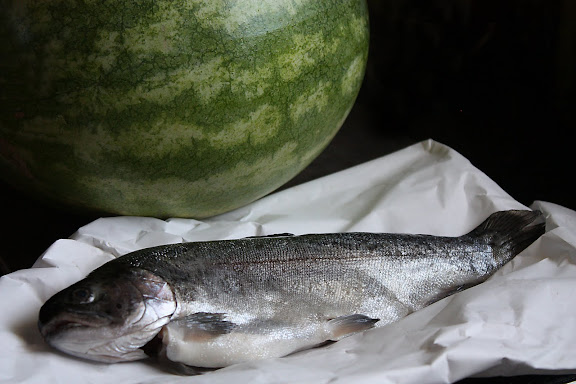
The combining of savory and sweet elements is by no means new or unique to any one cuisine. And I’m talking about traditional dishes which have been around for a long time, not the newly-invented novelties such as prosciutto ice cream or bacon-studded chocolate. Think of the dishes in your native cuisine, and you’ll most likely find quite a few pairings as unusual as this — or perhaps even more unusual. You just don’t think of those dishes as abominable, because you’re used to them. Those who didn’t grow up eating those dishes, on the other hand, look at them differently.
For example, I had never seen candied yams and marshmallows sharing the plate with roasted poultry until my very first American thanksgiving dinner. Yet, I’m sure to most Americans, and myself these days, this is neither strange nor disgusting.
So when I’m introducing watermelon and trout, I’m hoping you won’t be aiming your shoes at my head.
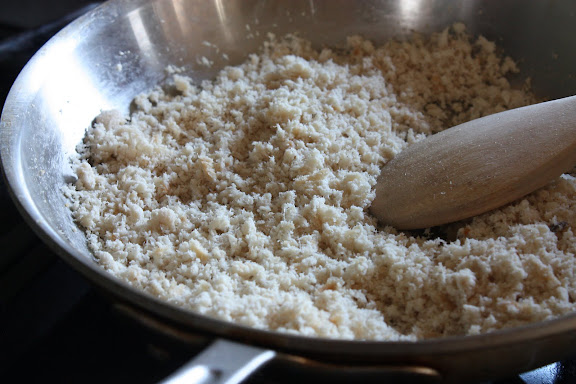
When done right, this sandy dip doesn’t taste or smell fishy at all. Yet, you would definitely taste the slightly-toasty savoriness of the fish along with the sugar. And if you think there’s a chasm between the two, you’d be pleased to know that it’s very effectively bridged by the crispy, caramelized shallots.
This and the cool, refreshing watermelon are made for each other. The Thai name of this dish, which literally means “dried fish watermelon,” implies that the two elements are inseparable and that the dip isn’t meant to accompany any other fruit. (Added August 5th: I’m thinking, though, that this dip would also go well with fresh pineapple, cantaloupe, and honeydew melon.)
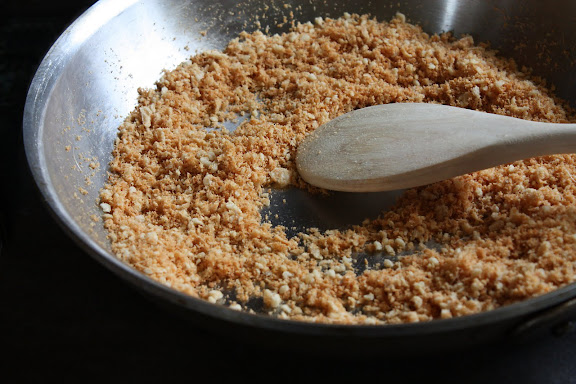
Traditionally, dried or sun-dried fresh water fish — most commonly snake head fish (Pla Chon ปลาช่อน) — is used to make this dip. However, since commercial dried fishes at Asian markets vary so greatly in quality and types and since I can’t find quality snake head fish where I am, I always make the dip with fresh trout, possibly the closest thing to Pla Chon. (I always use trout in Thai sour curry as well.) It’s a bit more work, but you have more control of the outcome that way.
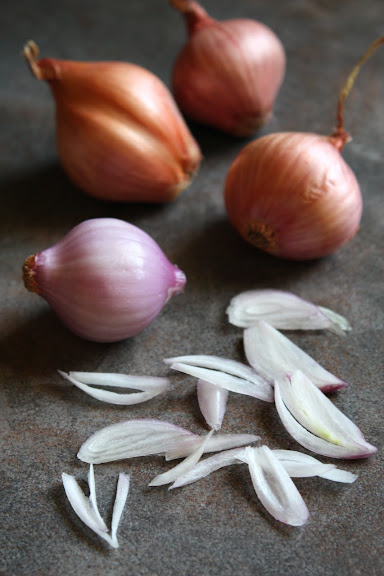
I usually buy a whole trout which has been gutted and cleaned. Then I steam it whole, skin and all, on a heatproof plate covered with a piece of plastic wrap. This can even be done in a microwave.
The rest is pretty easy. The only time-consuming stage is the dry-toasting of the steamed fish flakes in a skillet. You’ll have to stand by the stove, toasting the fish slowly until each and every flake is thoroughly dried, golden brown, and crunchy. It’s the part where you can’t rush.
Watermelon with Sweet Dried Fish-Crispy Shallot Dip (ปลาแห้งแตงโม)
Makes 3 cups
Printable Version
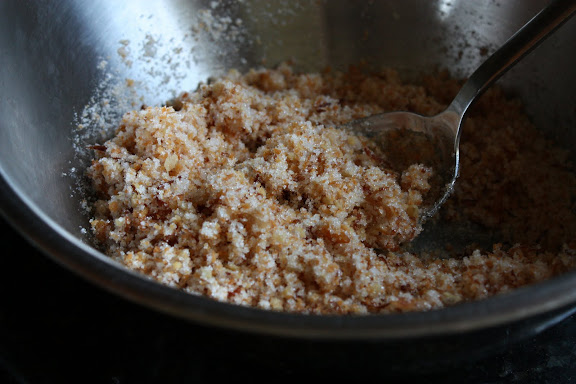
One 3/4-pound (~300-400g) whole trout
4 medium (80g) shallots, peeled and sliced very thinly lengthwise
1/3 cup (2.7 fluid ounces or ~70ml) vegetable oil
1 cup (200g) granulated sugar
1 1/2 tablespoons (25g) salt
Watermelon, prepared
- Place the trout in a heatproof plate, cover it with a piece of plastic wrap, and steam it in the microwave on high for 7-10 minutes (depending on the wattage of your microwave oven) or until the fish is completely cooked through and flakes easily when tested with a fork. Allow the fish to cool.
- Once the fish is cool enough to handle, peel off the skin, separate out the meat (you should up with about 180g of cooked fish meat), pick off and discard any big bones, and place the meat in a food processor (a mini-chopper or a mortar would be fine as well). Pulse the fish until the flakes are fine.
- Transfer the fish flakes to a dry skillet set over medium-low heat. Slowly toast the fish, stirring constantly, until the flakes go from off-white to deep golden brown. This could take up to 30 minutes, depending on the surface area of the skillet (wider means better moisture evaporation). You want the fish flakes to dry completely, so don’t rush this process by increasing the heat in hopes of shortening the cooking time.
- Once the fish is done, remove the skillet from heat. Stir the sugar and salt into it off the heat and set aside. (We don’t want the sugar to be entirely melted; we want a bit of it to melt and coat the warm fish flakes while the majority remains intact.)
- Add the oil and the sliced shallots to another small skillet when the skillet is cold, then set it on medium heat. Stir the shallot pieces around constantly to make sure they’re cooked and browned up evenly.
- Once the shallots are crispy, turn off the heat and immediately transfer the mixture to a heatproof bowl to prevent the residual heat in the pan to cook the shallots further and turn them too dark.
- Let the shallots cool down, then stir them into the fish mixture along with about a tablespoon of the oil in which the shallots were cooked.
- Serve the dip with fresh watermelon chunks.
- The completely cooled dip can be stored for up to 2 weeks in an airtight container at room temperature. To use, it’s best to scoop out just the amount you need with a clean spoon. That way, the dip stays fresh longer.







12 Responses to Watermelon with Sweet Dried Fish-Crispy Shallot Dip (Pla Haeng Taeng-Mo ปลาแห้งแตงโม)